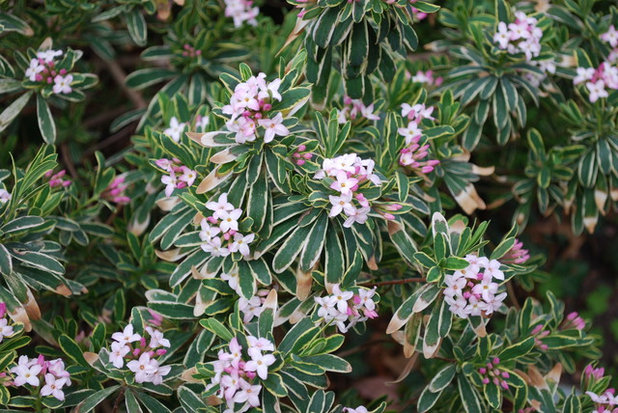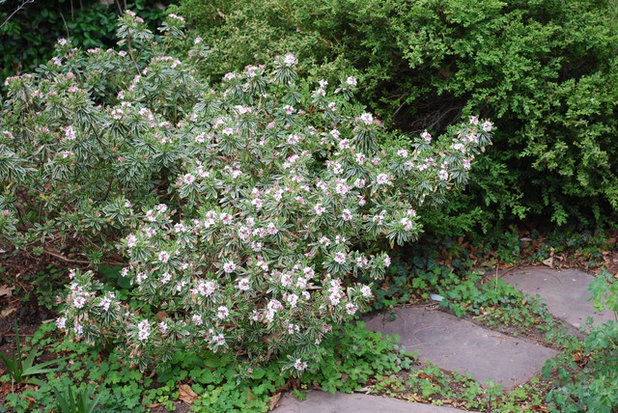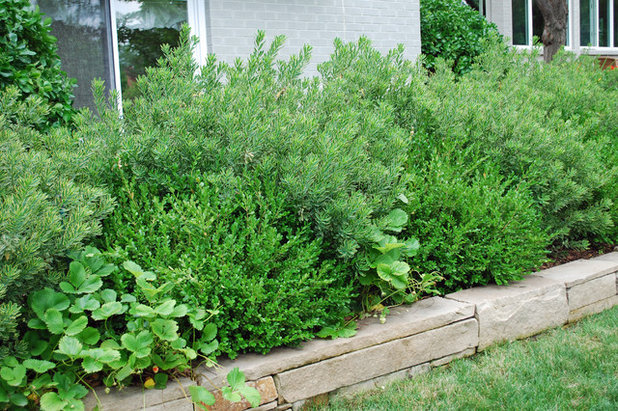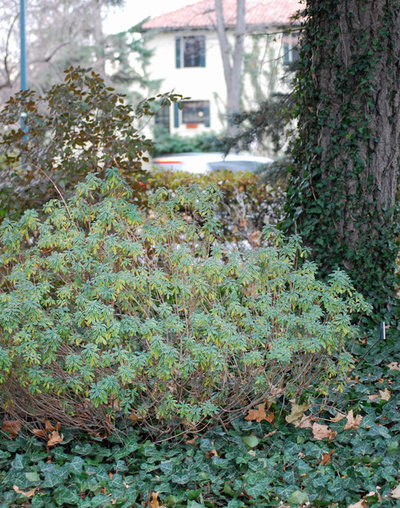Looking for a great shrub to add some pizzazz to your landscape? Carol Mackie daphne has the “fantastic four” elements of planting design: form, foliage, flowers and fragrance. And its trim size works well in small gardens, where plant selection must be especially fine-tuned. What’s not to like?

Jocelyn H. Chilvers
Botanical name: Daphne x
burkwoodii ‘Carol Mackie’
Common name: Carol Mackie daphne
USDA hardiness zones: 4a to 8 (find your zone)
Elevation range: Up to 7,000 feet
Water requirement: Moderate
Light requirement: Full sun to partial shade and filtered shade
Mature size: 3 to 4 feet tall and 4 to 5 feet wide
Benefits and tolerances: Compact, rounded form; semievergreen, variegated foliage; very fragrant flowers; tolerates cold and alkaline soil
When to plant: Spring
Seasonal interest: Variegated foliage is fairly persistent into winter; clusters of fragrant flowers bloom in early spring and may rebloom in late summer or fall.

Jocelyn H. Chilvers
Distinguishing traits. Dense branching creates a compact, rounded form that’s covered in rich green, narrow leaves with cream-colored margins. The foliage is semievergreen to evergreen. In early to mid spring the shrub is blanketed with clusters of small tubular flowers that are white when open and fade to pink. The flower fragrance is wonderful — strong and sweet.

Jocelyn H. Chilvers
How to use it. This shrub is a standout in a semishaded garden as an accent plant, an informal hedge or a foundation plant. Plant it near walkways, patios, decks or entrances — anywhere that you can enjoy the heavenly fragrance.
Carol Mackie daphne’s simple foliage shape and geometric form call out for companion plants with strongly contrasting characteristics. Consider using perennial geraniums, coral bells (
Heuchera spp), columbine (
Aquilegia spp) and bergenia, and woody plants like oak leaf hydrangea, contorted filbert (
Corylusavellana ‘Contorta’) and ‘Sunset Glow’ bamboo
(Fargesia rufa).

Jocelyn H. Chilvers
Planting notes. Carol Mackie daphne can be slow to establish. It’s critical to provide good drainage; loose, sandy-loam soil is ideal. Consider raised beds or berms when planting it in heavy clay. Protect this shrub from intense midday sun, especially at higher elevations, and winter winds. Mulch the soil or underplant with a ground cover to keep the root zone moist and cool.





